Operation “Sea Lion” – Invading England In 1940? [Part One]
November 7, 2016 by crew
Good day, Beasts of War. Oriskany here, back from my “Sci-Fi vacation” and ready to once more plunge into the dusty labyrinth of historical wargaming. For the topic of this next article series, I thought we could explore one of the most fascinating and debated invasions of World War II that never happened: Operation Sea Lion.
Put broadly, Operation Sea Lion (Unternehmen Seelöwe in German) was Germany’s plan to invade Great Britain in the summer or fall of 1940. After the spectacular success of “Case Yellow” and “Case Red” (the two-phased invasion of the Belgium, Holland, Luxembourg, and France), invading the UK seemed the next logical step. Or was it?
As we’ll explore in this series, the German war machine faced a staggering array of obstacles just to contemplate such an operation. However, they also enjoyed a wide range of very comfortable advantages. We all know it never happened. But could it have? Really? And if it had, what would it have looked like?
This series will look at the plans, conditions, and “best guesses” at some of Sea Lion’s possible outcomes. We’ll also feature a campaign-style series of wargames, featuring systems like Battlegroup (Ironfist Publishing) and Panzer Leader (Avalon Hill). Win, lose, or draw, we are GOING to invade England, and see what happens on the tabletop.
We’ll break Operation Sea Lion down in five articles. Article One will introduce the project and review some of the actual plans the OKW (Oberkommando der Wehrmacht) was looking at. The obstacles and advantages on both sides will be discussed, along with the preconditions the Germans would have to meet before Sea Lion could be launched.
Article Two will feature the assault and lodgement on the coasts of Sussex and Kent. Article Three will see the Germans expand their bridgehead, and Article Four will bring our imagined campaign to a climax. Finally, Article Five will make the case for Sea Lion, and offer a considered opinion on whether this really could have happened.
Sea Lion: The Prospects
Here on Beasts of War, we all love our alternate history. Yet while it’s chilling to imagine a swastika flying from Big Ben, or Winston Churchill and King George VI sharing a cell in the Tower of London, it’s important to take a hard look at the cold, hard facts...and measure the actual conditions faced by both sides of this prospective campaign.
As we all know, Germany had just conquered France. The British Expeditionary Force (BEF) had just been hurled off the continent, having been forced to abandon just about anything heavier than a Bren gun. The Germans seemed unstoppable, and boasted that the English Channel “was just one more river to cross” to invade England.
This, of course, is absurd. The English Channel poses a much bigger obstacle to cross than any river, especially when defended by the largest navy in Europe. But was the Royal Navy really that strong? Most of their ships were far past their prime, and spread over the globe to protect the sea routes that kept Great Britain alive.
But if the Royal Navy wasn’t as strong as it appeared, neither was the German Army. Despite most misconceptions, the invasion of France had been no walkover. The Germans had lost tens of thousands of men, tanks, and aircraft, and most formations in the summer of 1940 were now badly understrength and in need of rest.
The Germans also had no unified command structure, critical in a sea-air-land operation like Sea Lion. Nominally, the OKW had authority over the Wehrmacht (Army), Kriegsmarine (Navy), and Luftwaffe (Air Force), but in practice cooperation was poor and inter-service rivalries would plague the German war effort throughout World War II.
Then again, the German invasion of Crete in May, 1941 shows that the Germans could follow up a mainland European invasion by quickly bounding over hostile waters controlled by enemy naval units, establish a bridgehead on a defended island, and then expand the bridgehead to secure the island.
Of course, Great Britain is not Crete. Still, it teases the imagination with what just MIGHT have been possible, at least in the early stages of Sea Lion. In any event, our fifth article will take a much more detailed “pro and con” evaluation of Sea Lion’s prospects.
Sea Lion: The Plans
Another misconception many people have about Sea Lion is that there was ever “a” plan. There were several plans, perhaps half a dozen or more. All were very different and covered a wide array of potential invasion scenarios.
For purposes of brevity, these plans fall into two basic categories: those proposed and favoured by the Kriegsmarine and Luftwaffe, and those proposed and favoured by the Wehrmacht.
In summary, the Navy / Air Force plan called for a very narrow invasion corridor, with one assault zone extending from Hastings to Rye in the west, and a second from New Romney to Folkestone in the east. A lead proponent of this plan (drawn up as early as November, 1939) was Grand Admiral Raeder, commander of the Kriegsmarine.
Clearly, the Kriegsmarine and Luftwaffe wanted a narrow invasion corridor because this would be much easier for them to establish over the English Channel, protect against RAF and Royal Navy interference, and maintain a reasonable flow of supplies once a beachhead was established.
The Wehrmacht, however, hated this idea. To launch an invasion on such a narrow, vulnerable front (with only four initial divisions in two corps) seemed in their eyes nigh-suicidal. They wanted a much wider invasion corridor, with some plans calling for landings as far west as Portsmouth, Southampton or even Weymouth.
Of course, both plans were unrealistic. The Kriegsmarine and Luftwaffe could never hold open the Army’s overly-ambitious proposed invasion corridor, nor could the Army spearhead an invasion of England with just four initial divisions on such a narrow front.
On July 16th, 1940, Hitler issued Direction No. 16, his order to begin preparations for invasion. The German Army, Navy, and Air Force now had to come up with a workable compromise plan, finalized on or about August 30. Since these are the most plausible and well-documented, we’ll use these plans as a basis for our exploratory campaign.
Sea Lion: Prerequisites
The most immediate and incontrovertible prerequisite for any realistic contemplation of Sea Lion is of course that the British have to decisively lose the Battle of Britain, the gigantic, months-long air battle to control the skies over England. Starting in July, 1940, the British historically won the battle, Germany’s first real defeat of World War II.
For the Germans to have any chance at all, we have to imagine they win this battle, and win it badly. Such a result is possible, looking at German operations starting on “Adlertag” (Eagle Day - August 13th), a concerted effort to destroy RAF airfields and other vital infrastructure and force RAF fighters into combat against superior numbers.
This endeavour started very well, and within weeks the RAF was almost dead on its feet. Only when Hitler and Göring make the spectacular mistake of switching emphasis to attacks on British cities does the RAF get the reprieve it so desperately needed to recover.
So if we imagine the RAF largely crippled by early September, 1940, we now face other conditions the Germans have to meet. The first is a shipping fleet to get their troops across the Channel. In this, they were surprisingly successful, largely by appropriating thousands of small craft from the many ports of Holland, Belgium, and northern France.
The Germans also had specialized equipment ready to go, including four full battalions of “tauchpanzer” submersible tanks, based on the PzKpfw III. The Germans also had their ace in the hole, the best airborne assault force in the world, including gliders, an airmobile division, and of course the dreaded “Fallschirmjäger” parachute troops.
These specialists are the real key to initial success for Sea Lion. The German vision for Sea Lion was much less a “Saving Private Reinhardt” scenario with troops hitting a fortified, defended beach. Rather, airborne troops would take airfields, ports, and even beaches, on which heavier German seaborne formations could land in relative peace.
The other critical condition facing the Germans was time. Fragile as it was, any prospect for Sea Lion would have to be carried off before the middle of October at the latest. The weather over the English Channel tends to get borderline apocalyptic at that time, especially for any army trying to mount an assault across it.
The Germans also had to hurry before the British were able to recover too much from their defeat in France. While many men had escaped at Dunkirk, there was practically nothing in the way of heavy artillery, tanks, or other equipment. But the British were recovering fast (with the help of the Americans), so time was short.
Sea Lion: Getting Started
Of course, this is only the start of what I’m sure is a fascinating, controversial, and provocative topic. While certainly full of charged opinion, simply asking “would Sea Lion have worked” is a blatantly oversimplified question. We’re just exploring what might have happened if the Germans tried it, the prognosis will be presented in Part Five.
Also, the plan will be covered in more detail as we game through the opening battles. Again, we’re using the “compromise” plan widely published, others will certainly have opinions, ideas, and quotable sources on other plans. Please remember there were many plans and we’re just using the most plausible and well-documented one.
For now, let’s just sit back and imagine that just maybe, somehow . . . the Luftwaffe has managed a victory in the Battle of Britain. There was never a “Blitz” against British cities, the Germans just kept hitting the RAF where it could really be hurt, at its bases on the ground. Now, the RAF is all but gone, and the Germans own the air.
Now, the skies over Sussex and Kent are dark with German Heinkels, Dorniers, and Stukas. Huge 15-inch guns are installed at coastal batteries at Calais and Boulogne, ready to hurl 1800-pound shells across the Channel at targets from Folkestone to Hastings. The U-boats pull back from the Atlantic and now nest thick in the English Channel.
The date is September 15th, 1940. Across a darkened, blacked-out England, the roar of German bombers is replaced by the drone of hundreds of Ju-52 transport planes, some loaded with paratroopers, others towing DFS-230 gliders.
The die is cast. Operation Sea Lion is about to begin.
If you would like to write for Beasts of War then please contact us at [email protected] for more information!
"Win, lose, or draw, we are GOING to invade England, and see what happens on the tabletop..."
Supported by (Turn Off)
Supported by (Turn Off)
"The most immediate and incontrovertible prerequisite for any realistic contemplation of Sea Lion is of course that the British have to decisively lose the Battle of Britain..."
Supported by (Turn Off)


































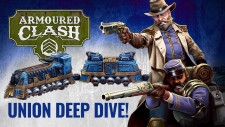






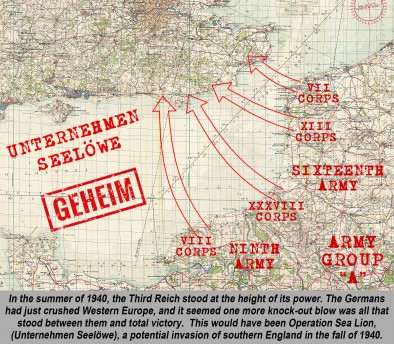
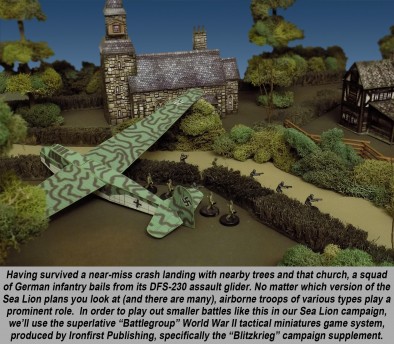
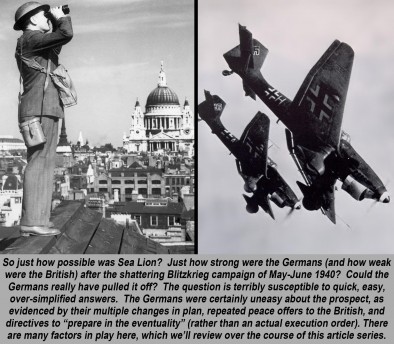
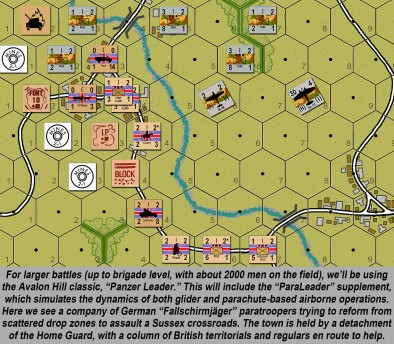
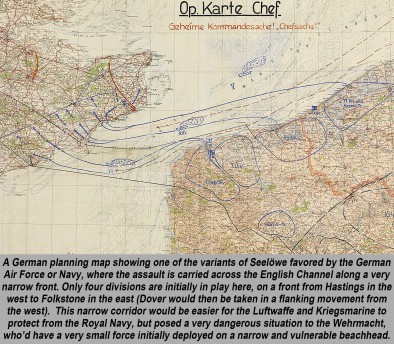
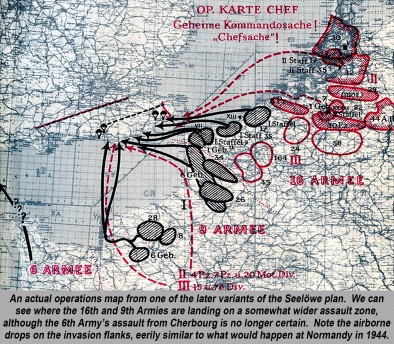
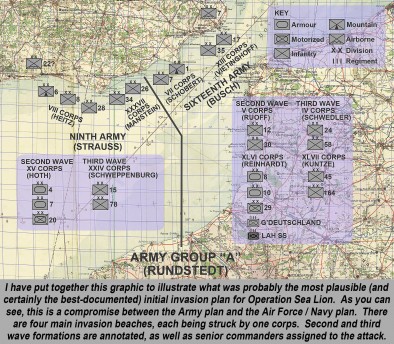
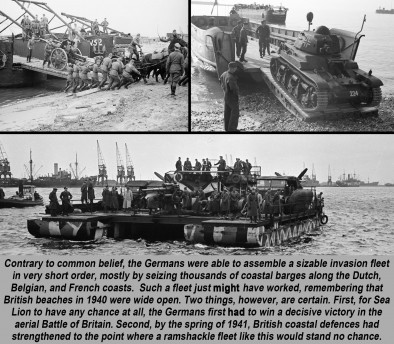

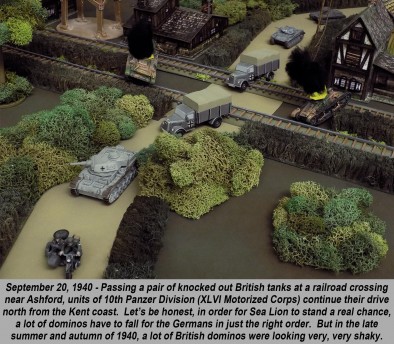


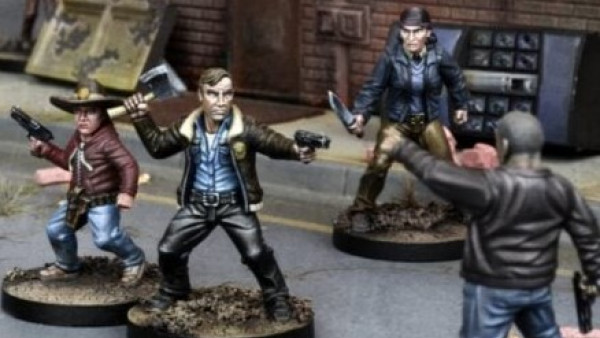


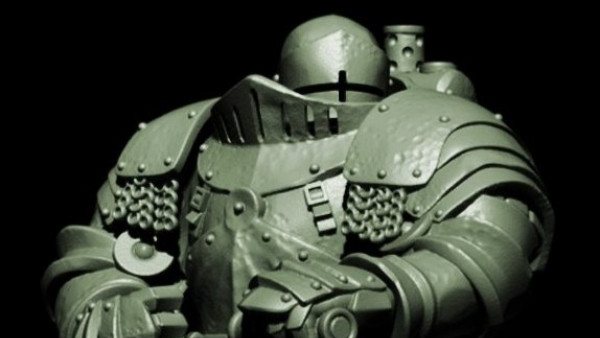

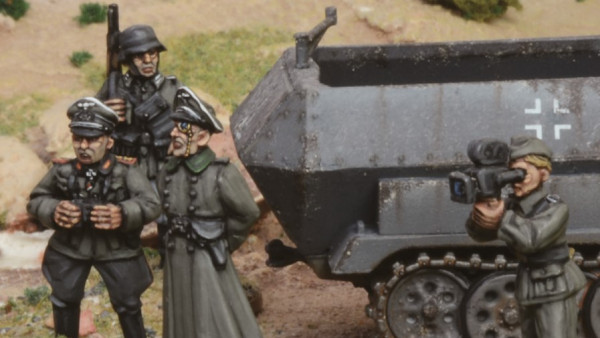


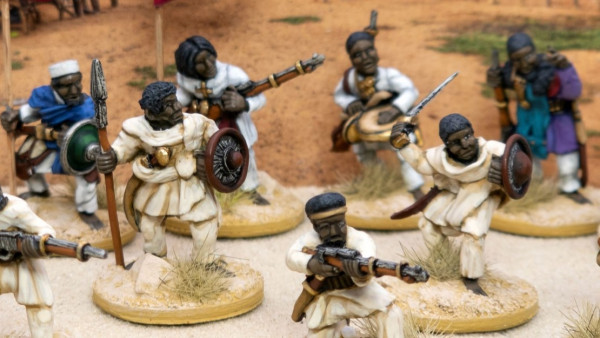

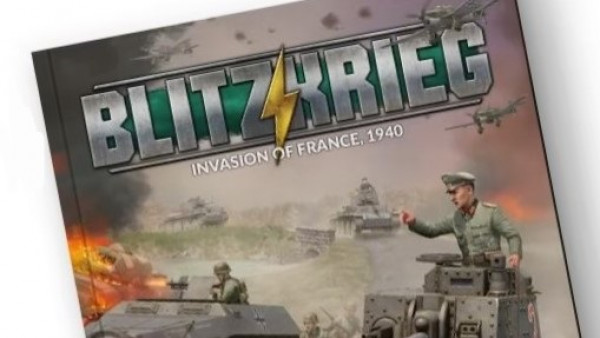
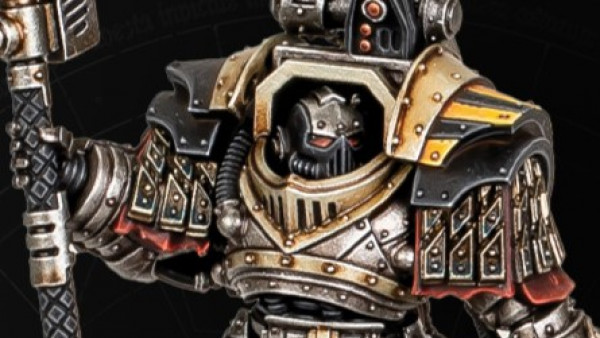





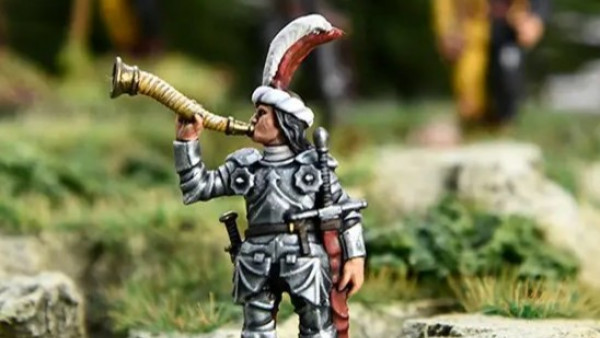

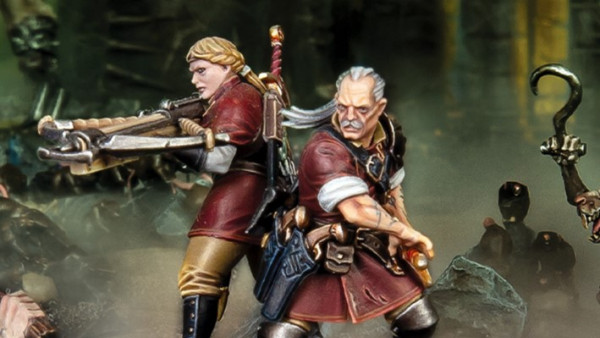
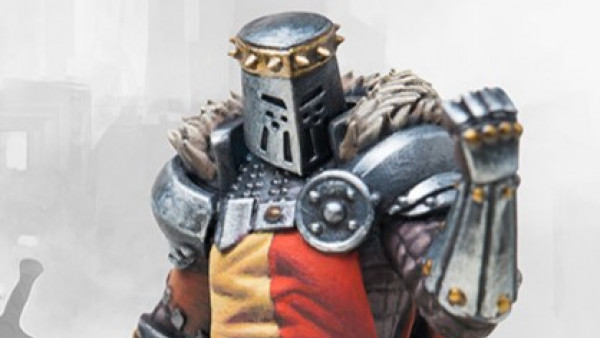


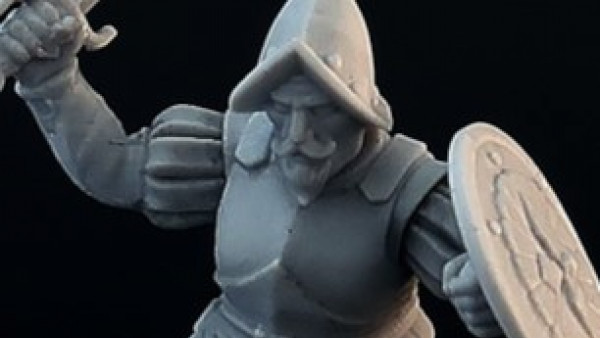

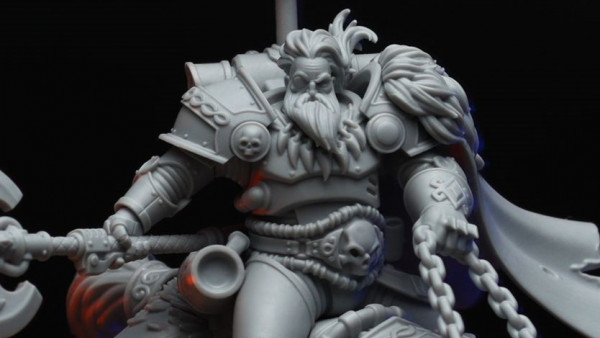

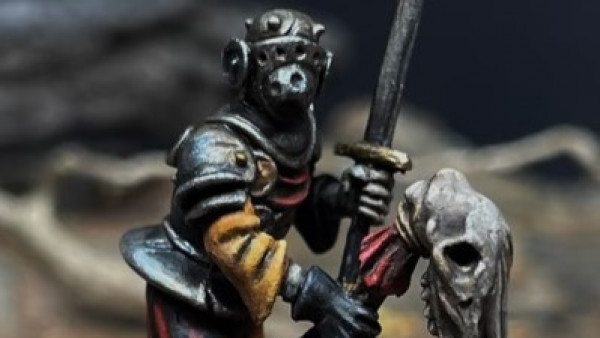


Excellent lunch time reading – and I see normal service is resumed with a recent historical article! 🙂 Living in Sussex, I can vouch that there are a lot of wide, open beaches, both sand and shingle, across the south coast. Defences at the time, as you point out, were poor and what did exist were built in the 19th century (Martello Towers and the later Palmerston Towers). Newhaven Fort is a Palmerston Tower and was the largest defensive structure to be built in Sussex. The only real challenge along the area of the south coast Sealion targeted are the… Read more »
Oh no, @redvers ! You live in Sussex? Apologies in advance if we blow up your house (or more accurately, your grandparents’ house). According to the plans I have, Hastings is a landing point, but not one of the larger ones. I have a feeling the Germans may have been trying to avoid the natural obstacles you mention. Some of my Panzer Leader maps are being custom-drawn from a combination of satellite images (Google Earth) and 1940 aerial photographs. I use the 1940 data for towns and roads where I can, but Google Earth has better topographical data. Anyway, I’m… Read more »
My house wasn’t built until well after the war, so no issues there!
Newhaven is reasonably large and I could understand that it would be hard to take, particularly given the other historical battles you mention. But there wasn’t a lot else defending the coast of Sussex beyond a few small, squat Martello towers. Good for a single gun and maybe a couple of MG’s but little else. So Newhaven would have been tough but the likes of Brighton, Seaford and others would have been less well defended. There would be plenty of beach for the Germans to aim for!
This is kind of what we’re aiming at in Parts 2 and 3 regarding the state of British beach defenses. Very, very thin in the summer and early fall of 1940. Which is a “good” thing, because the quality of the German invasion (*ahem*) fleet is also very bad. They certainly rounded up a lot of ships, and made some great modifications (my favorite is the propeller-driven “air boat” in the photo above), but this is no “Overlord” invasion fleet. Overlord shows what this kind of amphibious assault looks like when both sides have 2-3 years to prepare. Sea Lion… Read more »
As I expected a well written article. You even covered the near german win of the Battle of Brittain. I often have the feeling that the point that most of the RAF was destroyed in mid. 1940 is missing.
@redvers don’t underestimate the natural obstacles. Sand banks, weather condition and so on were often the end of a well planned invasion. Foreigners don’t know such specific condition which every inhabitant knows to well. So a sand bank could be a very good defence line 😉
Thanks very much, @setesch – hopefully I got all my German right. 😀 Other people were also asking / commenting on the Battle of Britain in the Weekender thread, and how the Germans might have won that, or how close they did or didn’t come. One of these days I may have to come up with an article series just on the Battle of Britain, it would need its own article series to do it justice. So for this series, we just have to start with a presumption that yes, the Germans have scored a crushing win here. Otherwise, discussions… Read more »
another fantastic looking article series @Oriskany !! look forward to the next part.
Thanks very much, @bigdave. Yes, in the next part, we have the intros out of the way and some of the analysis, so it’s time to hit the beaches!
Fabulous article @oriskany! 🙂 Once again a great mix of exposition and eye candy. I’m guessing the BG games were a lot of fun! Not to mention the Panzerblitz ones! 🙂
I always thought one of the greatest factors in the invasion would have been fighting British troops on their own soil. Yikes. Not a happy prospect.
Thanks, @cpauls1 – indeed PanzerBlitz / Leader and Battlegroup are my go-to systems. PanzerBlitz has been there for 32 years, I hope it shows how much I like Battlegroup, that PanzerBlitz now has an equal partner on my “shelf of glory.” 😀 Indeed, I’ve been adding a few small special rules to these Battlegroup games just to try and reflect some of the conditions you mention, especially the prospect of British troops fighting on their own soil. One the one hand, I’ve been shaving down some of the lists and units presented for the B.E.F. in Battlegroup Blitzkrieg. The B.E.F.… Read more »
Operation Sea Lion would certainly fail with men like Captain Mannwaring and the Walmington-On-Sea Home Guard ready to repel them. The Germans “don’t like it up them!”
Have no fears, @rfernandz2001 – we’re not selling the Home Guard short. There have been some scenarios I’ve run in “Para Leader” (airborne supplement to Panzer Leader) where the Home Guard actually performs pretty well. German fallschirmjäger platoons get badly scattered by winds and before they get a chance to consolidate, the Home Guard gets lucky with a kill now and again. There’s also the famous story of elite British commandos getting ready for the raid on St. Nazaire in 1942. They have a “dress rehearsal” exercise at a British port (I can’t remember where), with Home Guard playing the… Read more »
I saw a programmer on the Home Guard and some were given special commando training to fight behind enemy lines…Each groups/cell first task was to kill the person who gave them their operational orders in case he was captured and gave the location of each cell to the enemy
I may have seen the same documentary, @torros . I’ve also seen another one on YouTube recently that described these guerrillas getting the standard order: “Take two or three with you.” These men knew they were going to die. There’s also a show I found that captures more of the mood of the people awaiting invasion (more than any actual data or facts), but still provided some interesting insight. Part of the show details the writings of a novelist Margery Allingham, who lived with her husband along the Romney coast. They had a old 1800s revolver with just three or… Read more »
Excellent article once again looking forward to parts II-V. Nice to see Historical gaming getting top billing at BoW
Cheers,
Joe90
Thanks very much @joeninety – Indeed, it’s been nice to get back in my historical (or at least alternate historical) comfort zone. 😀
I definitely want to take a moment to thank the editor @brennon for putting up the article, making it look so great, and giving it a good “time slot” for publication. Thanks very much!
Lovely article @oriskany, very much looking forward to the next instalment.
Thanks very much @felixpike – Is that a WW2 fighter / bomber insignia on your icon? Or just a coincidence?
I’d like to give another shout-out to thank the @lancorz for helping with the banner graphics, side-bar graphics, and front-page images for this series. I love the compass and the coffee-cup stain. Just goes to show how rushed the Germans were in planning this operation, they couldn’t even keep their coffee sorted! 😀
Gee gawsh :3
It seem it is 😉 I had this insignia on the War in the Pacific game forum. 😉 @oriskany
I certainly mean it, @lancorz . 😀
Sure enough, @yavasa – a US Navy fighter squadron:
https://en.wikipedia.org/wiki/VFA-31
Confirmed for heavy fighting in the Pacific! 😀
@oriskany, it’s taken from the patch of Fighting 31 (VF-31) of the US Navy. My nickname has been Felix for many years (for completely unconnected reasons) so I’ve sort of adopted Felix the Cat as my avatar!
Yep, @felixpike – I could’ve sworn I’d seen it before as aircraft squadron insignia . . . did a Google Image search on it and there it was. https://en.wikipedia.org/wiki/VFA-31 😀 😀 Many people assume that “Oriskany” comes from the American Revolutionary War battle of August 1777. While I’ll confess I’ve read / gamed / written a lot on that battle (probably the bloodiest in American history “per capita”) the source of the name is a little sillier than that. Others have guessed it’s from the American Essex-class aircraft carrier USS Oriskany, CV-34, recently sunk to start a new coral reef… Read more »
I don’t believe it for once I have arrived at the party on time. That must be one for the books. Great first article for this series in what is now a very matured style. This one is going to be a very interesting series as many people I have spoken to have very strong opinions on this topic. Oddly Yarrack asked me a week ago to consider an Operation Sea lion campaign for March or April next year. Even stranger it will be done in 20mm and we will be using the Battlegroup rules as we want to focus… Read more »
Awesome, @jamesevans140 – I was hoping you’d turn up. 😀 Thanks for the kind words. I just hope the style doesn’t become “too matured,” i.e., formulaic. Indeed, people have some strong opinions on this topic. Glad to hear your group will be tackling this topic next year, and using Battlegroup no less. Please let me know if you need any of the research I’ve been putting together. I have pretty detailed records on Great Britain’s order of battle and dispositions (dated 11 September 1940), German plans, use of “Brandenburger 800” commando units, etc. I can’t disagree outright with just about… Read more »
As always you light up the way wargaming can and perhaps should go by looking sideways at what might have been, a little out of the box thinking and land up another great potential for game,s a plenty, another great set of articles in the offing here mate. I wonder when that wargaming book is going to come from your keyboard, you can only put it off so many times mate LOL!
Hey, who knows re: the wargaming book, @chrisg . 😀 BoW isn’t the only place I write or publish, and sooner or later I’ll be able to combine all these articles into a coffee table book of sorts. 😀 (after some editing to clean up the embarrassing typos, of course). I really hate it when I make misteaks.
There are place down in the London area which have been found, built to place weapon and troops in bunkers for this invasion. (Time Team) even did an episode about or defence.
Indeed, @nosbigdamus – even if we can imagine German spearheads getting as far as London, I can easily see this turning into a “Stalingrad West” kind of situation, with horrific fighting in bunkers, buildings, houses, factories, subways, and even sewers.
This article is perfect timing. I have been looking to run a solo campaign based on Sealion for a while now. I will use Bolt Action (I am looking at the skirmish level rather than bigger scenarios) and see how to include some partisan type engagements as well.
Looking forward to the next episode
Awesome, @applemak – please let us know how those games / engagements turn out when you get the chance to run them. Our Battlegroup games get a little small in scale, but nothing quite as “skirmish-intimate” as Bolt Action.
Bolt Action is a great infantry game, I feel. It’s when people start bringing a lot of tanks and artillery into it (on both sides, that is) that it starts to get a little strange for me. But it sounds like it would be a perfect fit for your project.
Hope you keep us in the loop! 😀
Really nice write up. Looking forward to the next article
Thanks, @bruce9651 . We’re aiming at one article each Monday until December 5 – so we can wrap up before the DropFleet Commander boot camp. 😀
Great article, Sir!
I still think they should have invaded via the lovely Suffolk coast. All nice and flat here and sparsely populated and apart from the odd Martello tower only weakly defended. Great place to get a bridgehead. 😉
Can’t wait for the next instalment!!
Have no fear, @suetoniuspaullinus – in Part 3 we lay out our vacation plans along the lovely Sussex coast (Part 2 is mostly in Kent).
The invasion of the Netherlands while fast did cause quite a bit of losses in transports.
As such the Germans would have had to succeed at their stated goal (capture the Dutch government + Queen).
I’m sure it had an effect on Sea Lion as well.
source : https://en.wikipedia.org/wiki/Battle_for_The_Hague
Considering that they failed against the unprepared and under equipped Dutch troops one has to wonder how they’d do against the British who at least had some experience after Dunkirk.
There is going to be a movie about Dunkirk : http://www.imdb.com/title/tt5013056/
It will be interesting to see how accurate that one is.
@limburger – The ragged state of the German Army and Air Force (as you probably know, in the German military, airborne forces belonged to the Luftwaffe, not the Wehrmacht) in the aftermath of Case Yellow and Case Red is certainly a valid observation, one we’ll be staying with through the course of this series.
I’m looking forward to that Dunkirk movie as well. 😀 Her’es hoping for the best.
“dusty labyrinth of historical wargaming.” 🙂 Unlike most of the site, I had never heard of this invasion until now. Yes I’m an ignorant American :(. I have to say I love the realistic look at a “what might have been” scenario.” To often alternative history is way off the mark…machine guns at Gettysburg or steam powered mechs in WWI (No Battletech hate mail please, I have my own Mechs and they are even inner sphere). I love that this article approaches the possibilities in way that clearly describes what would have had to happen for this to even start.… Read more »
Dusty indeed, @gladesrunner . I missed it. And not all Americans are ignorant. Just those voting for Donald Trump.
I think you hit on a good point though, distinguishing between alternate history, and “pulp” alternate history (WWX, Konflict 47, Dust, All Quiet on Martian Front). Not that there is anything wrong with either. But they’re definitely different.
I guess you could make the case that even the most diligent, faithful, precise historical wargame becomes “alternate history” the second the dice first hit the table. 😀
A great article, really looking forward to the rest, just a couple thoughts on the German Navy and the RAF. Following the invasion of Norway the Germans sustained heavy losses Especially their destroyer fleet would this deficit be factored in when they conduct the seaborne Element of the operation. With regards to the RAF what role would their bomber command Elements have in targeting the beachheads and infrastructure like roads and bridges to Slow the German advance. I can recall a couple of incidents in the 1980’s during my Service where a cache of ‘Mills’ bombs and Phosphorus bombs were… Read more »
Thanks for the great input, @ozzie . To reply point by point: German destroyers lost at Norway: While the Kriegsmarine indeed sustained heavy losses (almost 50% of their surface fleet) in Operation Weserubung, I don’t forsee the lack of German destroyers (primarily the Z-class, I believe) being a major obstacle for Sea Lion’s initial landings. This may sound crazy, I know. But the fact is the Germans never had any hope of matching the Royal Navy on the surface, before or after Norway. So do the losses at Norway really matter? Accordingly, plans to make the assault across the Channel… Read more »
The caches were found by accident one in an urban redevelopment site and another was a bunch of very rusty mills bombs that looked like they had been inside a crate that had rotted away completely thankfully the finders were sensible to leave the items in situ and the authorities informed.
Yeah, @ozzie , as fascinating as such a find would have been, that’s not the kind of thing you want to play with. 😀
A great start to the series @oriskany as you say the u-boats would be moved to France to harass all shipping going to the UK slowing the build up of the defences at the cost. One thing you never mentioned/I missed most of the German fleet was towed barges not the designed landing craft used on DDay slowing everything so could they supply the army with this fleet?
Great input, @zorg – I will try to answer. In VERRRRRY basic terms, the Kriegsmarine’s overall plan was to seal off the western and eastern ends of the channel long enough for the invasion to get across. This would have been accomplished by mines and especially U-boats, in conjunction with heavy activity by the Luftwaffe. How wide a stretch of the Channel are they sealing off? That depends on which version of the plan you’re using. The Navy and Air Force wanted a very narrow channel, the Army wanted a ridiculously wide channel. Records strongly suggest they had settled on… Read more »
received and understood.
loose lips sinks ships.
Not at all, @zorg – I’m not trying to discourage anyone’s participation and feedback. I just don’t want to get too far ahead.
I’ll say this much for sure. The very poor nature of the German “landing fleet” was factored into the landing scenarios we’ll show in Parts 2 and 3. Stay tuned! 😀
Lol no spoilers.
role on next Monday.
http://www.johndclare.net/wwii6_sealion.htm#part7 I do not say they cannot come, only that they cannot come by Sealion Operation Sea Lion order of battle Heeresgruppe A Generalfeldmarschall Gerd von Rundstedt 16.Armee — Generaloberst Ernst Busch First Wave XIII.Armee-Korps — General Heinrich-Gottfried von Vietinghoff genannt Scheel. 17.Infanterie-Division 35.Infanterie-Division Luftwaffe II./Flak-Regiment 14 VII.Armee-Korps — Generaloberst Eugen Ritter von Schobert 1.Gebirgs-Division 7.Infanterie-Division Luftwaffe I./Flak-Regiment 26 Second Wave V.Armee-Korps — General Richard Ruoff 12.Infanterie-Division 30.Infanterie-Division XXXI.Armee-Korps — General der Panzertruppen Georg-Hans Reinhardt 8.Panzer-Division 10.Panzer-Division 29.Infanterie-Division (mot.) Infanterie-Regiment (mot.) Großdeutschland Infanterie-Regiment Leibstandarte SS Adolf Hitler (mot) Third Wave IV. Armee-Korps — General Viktor von Schwedler 24.Infanterie-Division 58.Infanterie-Division XXXII.Armee-Korps… Read more »
As always great read – Sealion is an interesting operation to dig into
@rickoshea – Great input, sir. I gotta admit, though, that I’ve seen the webpage in your link and straight off the bat, I don’t agree with very much on it. “I do not say they cannot come, only that they cannot come by Sealion” Is this a quote attributed to someone? “When France collapsed, in mid-June 1940, the German staff had not even considered, never mind studied, the possibility of an invasion of Britain.” Not true. Grand Admiral Erich Raeder had detailed plans on paper as early as November 1939. “Thus, any Sealion which takes as its Point of Departure… Read more »
Thanks very much, @rasmus ! 😀
great read oriskany.
Thanks very much, @radegast6 . 😀
I always greatly enjoy your articles @oriskany, historical or otherwise. Please keep it up!
Thanks very much, @ghostbear !
Thanks very much, @ghostbear ! I’ll keep it up as long as people keep reading (and posting) on my ramblings. 🙂
Thanks @oriskany I will take you up on your offer of your research material as there is no point for us to do the same work to end up in the same place. Norway worked because it was not the jewel in the crown that England would have been. So the people involved were very minor political players while Sea Lion has the egos of the main political hitters involved. Sea Lion would never had a central controlling body or person other than Hitler himself. He avoided this kind of structure, preferring several commands with competing authority and allowing for… Read more »
Awesome, @jamesevans140 . The research is mostly higher-echelon materials, although the British OOB drills down to battalions and sometimes companies. I’m afraid I’ve come up short on what the average company or platoon was actually equipped with. Of course I can find BEF ToEs with no issue. It’s just that these in many cases would no longer be accurate for a Sea Lion scenario after the equipment losses of the summer. I think we agree that comparisons between Norway and Sea Lion can only be taken so far. I hope I didn’t present the idea that because the Germans pulled… Read more »
Ah yes, let’s imagine the Brits got knocked down and it was actually Vichy France that produced Alo! Alo! a couple of decades later 😉 Ok, as far as I know @oriskany and his attitude towards this articles I can say it will surely be based on solid foundation and research that will shed a lot of light on the quasi-historical campaign that will unfold in the next episodes. Looking forward to it. On the one hand there is not much to comment on this one with the plans sorted out and the subtle but really important problems on both… Read more »
I totally agree @yavasa , that in any discussion of the Battle of Britian, (the aerial “prequel” this series), the inclusion of Americans, Poles, Czechs, Australians and New Zealanders, I think one Israeli (or in those days, a Palestinian “Zionist?”), etc is vital. I think you’re now the fourth person who’s brought up interest in the Battle of Britain in detail. That may well have to be a future article series. Believe it or not, I do listen, I do read all these posts, and I really do take people’s interests into account re: what series I try to do… Read more »
@oriskany September 1939 we can pair up 😉 Ok, back to the topic. I saw the maps and plans. Read a lot about the Sea Lion and Battle of Britain a few years back. Problem is what you have said during the Weekender. The one-sided perspective. The maps that you have provided show exactly where the Germans were planning to drop their airborne units and land from the sea. The places were well chosen, but… correct me if I am wrong but the Luftwaffe had a rather weak transport fleet. So, what to do? Send in the 22nd first or… Read more »
There’s only one thing in your post I 100% do not agree with. “… I will shut up.” Please do not! 😀 Your points about the transport capacity of the Ju-52s is a valid one and has been brought up by some others. Now, the Germans really did have a lot of success with supplying armies competely by air. Norway (in some places), the Demyansk Pocket in the winter of 41-42. Yes, the do fail miserably in the winter of 42-43 when the 6th Army at Stalingrad is surrounded. But that was 26 divisions, I think. We’re talking about 1/3… Read more »